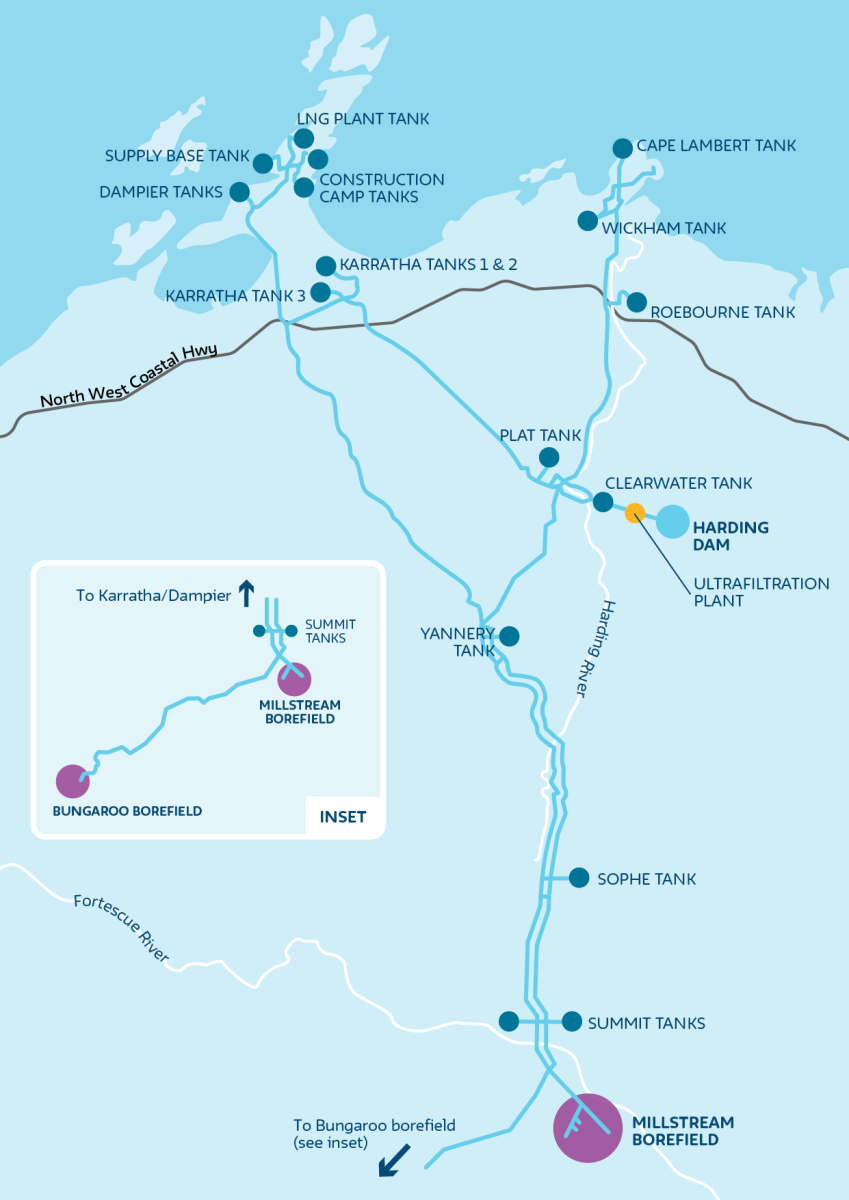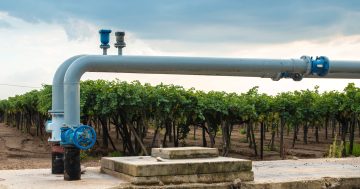
The West Pilbara Water Supply Scheme’s system of borefields. Image: Water Corporation.
The Western Australian Government is partnering with Rio Tinto to strengthen water security in the Pilbara, with both parties signing a memorandum of understanding.
The memorandum solidifies cooperation between the two parties on the issue of water security in the Pilbara region of Western Australia for both industry and residents.
“To safeguard short-term water supplies for the West Pilbara, the Cook Government is collaborating with Rio Tinto on a sustainable, climate-resilient future for the region,” Water Minister Simone McGurk said.
The government and Rio Tinto seek to reduce the use of groundwater from the Millstream and Bungaroo borefields, important sources that have been diminished due to lower annual rainfall and streamflow in the past five years.
These borefields supply the West Pilbara Water Supply Scheme (WPWSS), which provides water for the towns of Wickham, Dampier, Roebourne, Point Samson and Karratha as well as industrial areas such as Cape Lambert and Burrup Peninsula.
The extraction of water from these borefields is of concern to traditional owner groups such as the Yindjibarndi and Robe River Kuruma people.
“These steps will make significant progress towards reducing pressure on precious groundwater and respond to the concerns of Yindjibarndi and the Robe River Kuruma people traditional owners on the environmental and cultural impact on these water sources,” Ms McGurk added.
The reduction of groundwater will be achieved through Rio Tinto’s delivery of the first stage of the Dampier Seawater Desalination Plant, at its Parker Point operation area.
The plant, expected to be operational in 2026, will provide 4 GL of water a year and reduce demand for local groundwater from the Millstream and Bungaroo borefields.
“As part [of] our commitment to using water more efficiently, construction of Stage 1 of our Dampier Seawater Desalination Plant is well underway,” Rio Tinto iron ore chief executive Simon Trott said.
”This will reduce abstraction from the Bungaroo borefield, which we recognise is a significant concern for the Robe River Kuruma people.”
Water Corporation and Rio Tinto will also assess the feasibility of a second stage of the plant to be operational in 2027. The second stage would add another 4GL of water a year to bolster the short-term drinking supply through the WPWSS and would reduce stress on the Millstream aquifer system.
The Water Corporation has also committed to constructing a large-scale desalination plant by 2030 with the aim of developing climate-independent water sources. This would also support Rio Tinto’s transition to a new system whereby water is not extracted from Bungaroo.
“We are pleased to partner with the Western Australian Government in Stage 2 of the Dampier Seawater Desalination Plant,” Mr Trott said.
”We also welcome the news that it is prioritising the delivery of a further desalination plant for the region. The government’s large-scale plant will support Rio Tinto’s transition pathway to zero abstraction from the Bungaroo Coastal Supply Borefield, as well as deliver clear benefits to the broader West Pilbara community.”



